With Trump back in office, the recurring question of the need for nuclear weapons testing has resurfaced in the national security debate. Project 2025’s directive that the US return to “immediate test readiness” raises further alarm, given the primacy of that document in Trump’s circle. The general uncertainty around current U.S. nuclear posture gives added weight to the historical importance of the atmospheric and underwater nuclear weapons tests conducted on the Bikini Atoll, recounted here by one of the leading advocates for public safety in the nuclear age. —Ed.
Beginning in the late 1970’s, I was working for the Environmental Policy Institute around the time when atomic veterans started to descend on the nation’s capital. I would arrange meetings with Congressional offices, and the offices of both the Defense Nuclear Agency and Veterans Affairs, to enable the veterans to share their experiences and seek justice for being sent in harm’s way. About 250,000 soldiers, sailors, Marines, Coast Guard men, and airmen took part in atmospheric nuclear weapons tests from 1945 to 1963.
John Smitherman and Anthony Guarisco were 17- and 18-year-old sailors, respectively, in July of 1946, when they took part in “Operation Crossroads”—the first two nuclear weapons tests following World War II. These tests were conducted on the Bikini Atoll of the Marshall Islands and codenamed “Able” and “Baker.”
As a result of this extraordinary indifference to lethal danger, some 200 U.S. Navy ships were contaminated, and ships carrying radioactive fallout subsequently sailed to home ports in California. These ports are still being cleaned up today, nearly 80 years later. Glenn Seaborg, the chairman of the Atomic Energy Commission from 1961 to 1971, described the Baker test as “the world’s first nuclear disaster.”
Anthony and John were part of the U.S. Navy’s Pacific fleet involving 40,000 service men and 2,000 civilians. They along with others swam in the heavily contaminated Bikini Lagoon. When I met them in 1980, John was suffering from lymphatic cancer and Anthony from a severe form of spinal arthritis.
In March 1983, Anthony and his wife Mary showed up at my cluttered office and ceremoniously handed me a large stack of documents. They had just visited the UCLA library in Los Angeles and found boxes of forgotten, declassified documents belonging to Dr. Stafford Warren, the chief safety officer during both the Manhattan Project and the 1946 Crossroads tests. It was a tremendous and painful struggle for Anthony just to climb the two stories of steep steps to my office.
The documents—generated before, during and after the two tests Able and Baker—revealed growing consternation and no small amounts of alarm and criticism about what amounted to the collapse of the radiation protection regime developed for the tests. A third test was cancelled after Warren appealed to Washington to stop the tests for safety reasons.
For corroboration, the next day I called Herbert “Pete” Scoville, Jr. who had worked directly for Warren during the Crossroads tests. Pete served as a senior official in the U.S. nuclear weapons program, as Deputy Director for Research at the CIA, and then with the nascent Arms Control and Disarmament Agency in 1963. He left in 1969, to dedicate himself as an activist to curtail nuclear weapons.
“I’ll be right there!” he told me over the phone. Pete was also suffering from a crippling form of arthritis and, like Anthony, took the slow, arduous journey up the steps to my office. As he studied the documents, a chapter of his life from the early nuclear weapons program reopened. He had been a member of Warren’s Radiological Safety Group and was responsible for detecting the spread of radioactivity from areas where the bombs were exploded. The goal was to ascertain the impacts of atomic bombs, similar in size to those dropped on Japan less than a year earlier, on “target” ships which had been left over by Germany, Japan and the United States.
I also consulted with David Bradley, another member of Warren’s Safety Group, who was then a young officer and medical doctor just out of Harvard. In his book No Place to Hide, published in 1948, Bradley was among the first to the warn the public about the hazards of radioactive fallout from nuclear weapons testing, based on his experience as a “Geiger man” at the 1946 weapons tests. “We certainly have little idea what the long-range effect on our lives would be from an all-out atomic war, devastating our shores, our fish and our agricultural industries. But at least at this time we do know that Bikini is not some far-away little atoll, pinpointed on an out-of-the-way chart. It is San Francisco Bay, Puget Sound, East River. It is the Thames, the Adriatic, the Hellespont and misty Baikal.”
After sharing the papers with Scoville and Bradley, I obtained a small grant and asked my colleagues Arjun Makhijani and David Albright to prepare a report based on the Warren papers. The first explosion, about 520 feet above the target vessels, missed its mark by about a half mile but still caused significant damage. Baker, the second test, was exploded 90 feet underwater amidst the discarded “target” ships in the Bikini Lagoon.
The Baker test threw up two million tons of water laced with deadly plutonium and fission products that landed back into the lagoon. Failing to heed warnings by Warren’s staff, shortly after the Baker detonation the Navy also sent its ships into the heavily contaminated lagoon following the explosion. In addition to plutonium contamination, neutrons from the bomb rendered the salt water in the lagoon highly radioactive, which concentrated in the ship’s pipes and evaporators.
Warren’s staff decried the “hairy chested indifference” to the radiation hazards by the Naval officers. In doing so, the Navy very quickly contaminated a large part of the Pacific Fleet, in addition to exposing thousands of military personnel, many of whom were placed on the target ships to perform decontamination.
Despite repeated efforts by Warren and his group to get men off the target ships, thousands of sailors, many wearing no shirts and in shorts, were sent into the lagoon to scrub contaminated decks without any protection or ability to measure their exposures. David Bradley pointed out that in a matter of days, the labs set up to measure internal exposures were overwhelmed with contamination samples, and had to rely on the specimens that were sent to Los Alamos, New Mexico to determine plutonium exposures. According to a preshot estimate (conducted in advance of the test) by the Los Alamos National Laboratory: “There will probably be enough plutonium near the surface to poison the combined armed forces of the United States at their highest wartime strength.”
“I never want to go through the experience of the last three weeks of August again,” Warren told his wife. Warren later leveled a criticism of the reliance on dose calculations at the Crossroads tests that resonates today. “Chemists and physicists don’t understand biological problems,” Warren concluded “They use a slide rule and diffuse things evenly and then come up with figures that are fantastically low or safe.” After the test, Warren soon left his position in the Army, and by 1947 began his efforts that would extend over the next several years to warn the American public about the hazards of radioactive fallout from bomb testing.
John Smitherman died in September of 1983 of his cancer, after being rejected six times by the VA. Anthony Guarisco went on to highlight the plight of atomic veterans as a founding member of the National Association of Atomic Veterans. He died in 2013 after multiple denials by the Veteran’s Administration—which repeatedly claimed his doses were too low to have caused his disease.
Our report was completed in May 1983. Dr. Karl Z. Morgan, who was also present as a senior radiation protection expert during the Crossroads tests, made it available to Rep. Paul Simon (D-IL) for him to present at a Congressional hearing regarding compensation for atomic veterans. It was the first time that the official assumptions claiming radiation exposures—too small to be of concern—were challenged by historical records.
Official recognition of potential harm to U.S. military personnel from testing is viewed as a dagger aimed at the heart of the nation’s national security. By curtailing a backlog of unprocessed claims, the Trump administration has impacted the ability of veterans to access benefits and care, including those covered under the Radiation-Exposed Veterans Compensation Act of 1988. And true to form, through massive firings in the VA, Trump has made it harder for veterans to get justice.
Robert Alvarez served as senior policy adviser to the Energy Department’s secretary and deputy assistant secretary for national security and the environment from 1993 to 1999. He is currently an Associate Fellow at the Institute for Policy Studies. Articles and autobiographical vignettes he has published in The Washington Spectator can be accessed by inserting his name in the search field at washingtonspectator.org, and a complete selection of his writings are available at https://ips-dc.org/research/?_ips-post-author=3207&f=ips-post-author.

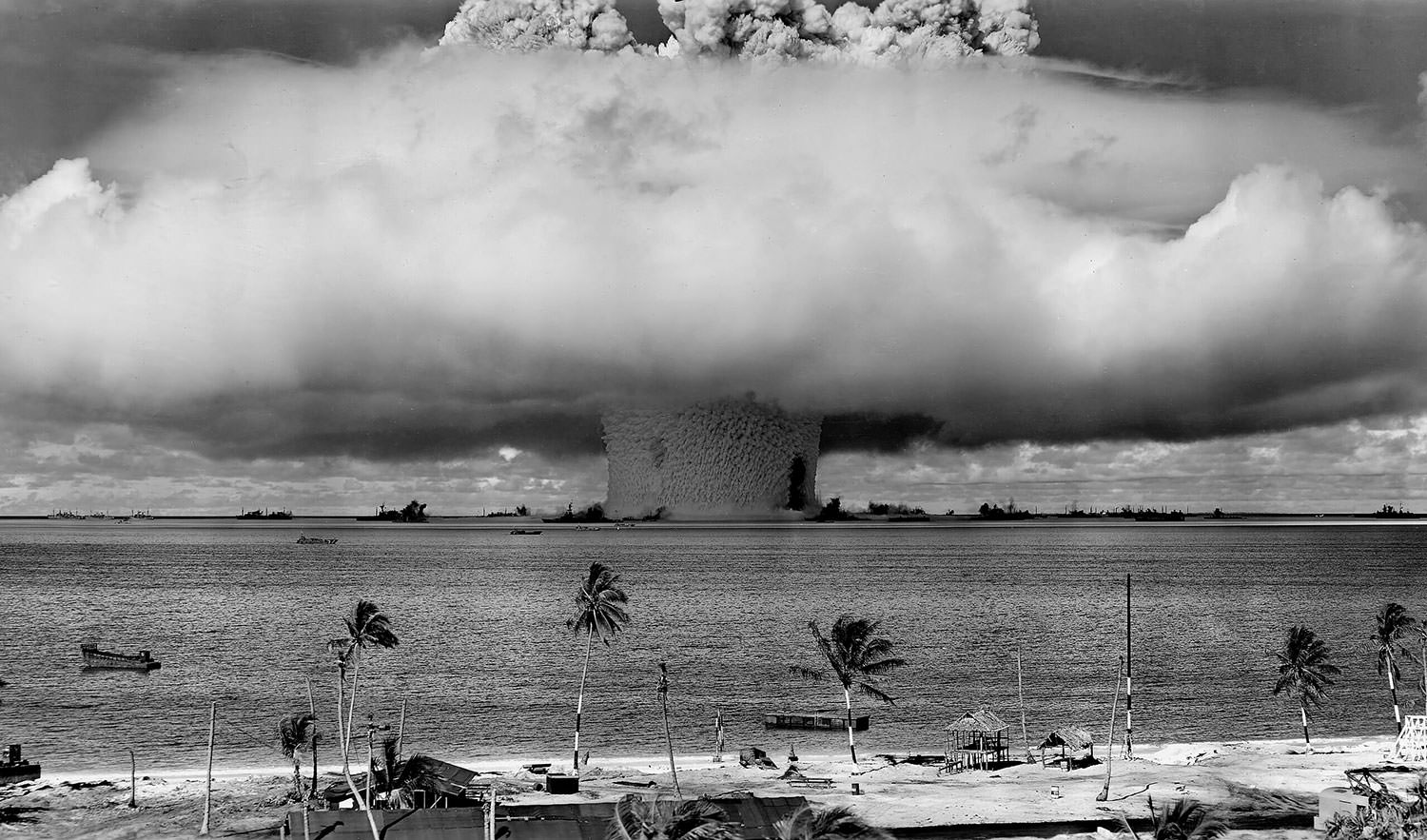
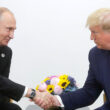
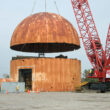
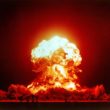
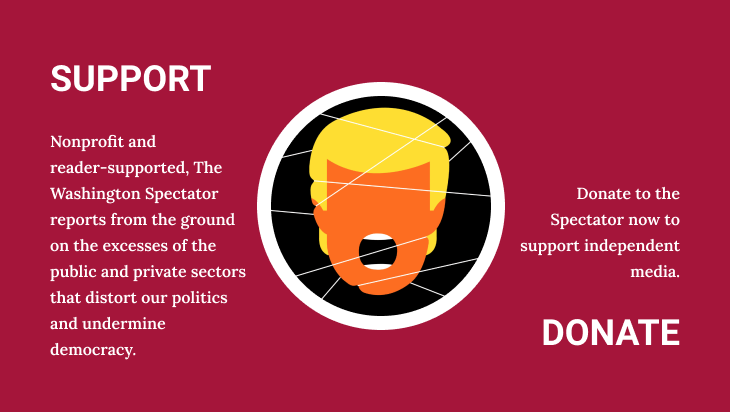
My dad was a Guinea pig in one of the government tests. His annual two weeks of training in the Marine Corps had him and other troops in a ditch in Nevada while a nuclear bomb was detonated. He said they were instructed to not look and the explosion. No safety gear other than their helmets. We lost dad to cancer.
I can think of two nuclear disasters before this one — Hiroshima and Nagasaki.